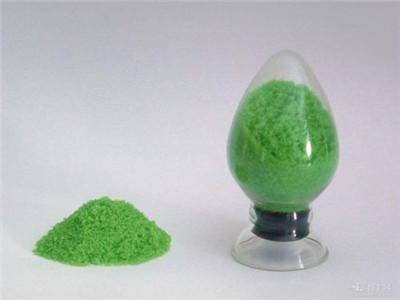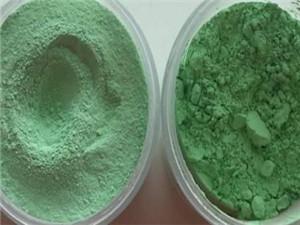
Nickel(II) oxide powder (Ni Assay Min.78%) CAS 1313-99-1
Nickel(II) Oxide
| Synonym: | Nickel monoxide, Oxonickel |
| CAS NO: | 1313-99-1 |
| Chemical formula | NiO |
| Molar mass | 74.6928g/mol |
| Appearance | green crystalline solid |
| Density | 6.67g/cm3 |
| Melting point | 1,955°C(3,551°F;2,228K) |
| Solubility in water | negligible |
| Solubility | dissolve in KCN |
| Magnetic susceptibility(χ) | +660.0·10−6cm3/mol |
| Refractive index(nD) | 2.1818 |
Enterprise Specification for Nickel(II) Oxide
| Symbol | Nickel ≥(%) |
Foreign Mat. ≤ (%) |
|||||||||||
| Co | Cu | Fe | Zn | S | Cd | Mn | Ca | Mg | Na |
Insoluble HydrochloricAcid(%) |
Particle | ||
| UMNO780 | 78.0 | 0.03 | 0.02 | 0.02 | - | 0.005 | - | 0.005 | - | - | D50 Max.10μm | ||
| UMNO765 | 76.5 | 0.15 | 0.05 | 0.10 | 0.05 | 0.03 | 0.001 | - | 1.0 | 0.2 |
0.154mm weight screen residue Max.0.02% |
||
Package: Packed in bucket and sealed inside by cohesion ethene, net weight is 25 kilogram per bucket;
What is Nickel(II) Oxide used for?
Nickel(II) Oxide can be used for a variety of specialized applications and generally, applications distinguish between "chemical grade", which is relatively pure material for specialty applications, and "metallurgical grade", which is mainly used for the production of alloys. It is used in the ceramic industry to make frits, ferrites, and porcelain glazes. The sintered oxide is used to produce nickel steel alloys. It is typically insoluble in aqueous solutions (water) and extremely stable making them useful in ceramic structures as simple as producing clay bowls to advanced electronics and in light weight structural components in aerospace and electrochemical applications such as fuel cells in which they exhibit ionic conductivity. Nickel Monoxide often reacts with acids to form salts (i.e. nickel sulfamate), which are effective in producing electroplates and semiconductors. NiO is a commonly used hole transport material in thin film solar cells. More recently, NiO was used to make the NiCd rechargeable batteries found in many electronic devices until the development of the environmentally superior NiMH battery. NiO an anodic electrochromic material, have been widely studied as counter electrodes with tungsten oxide, cathodic electrochromic material, in complementary electrochromic devices.








